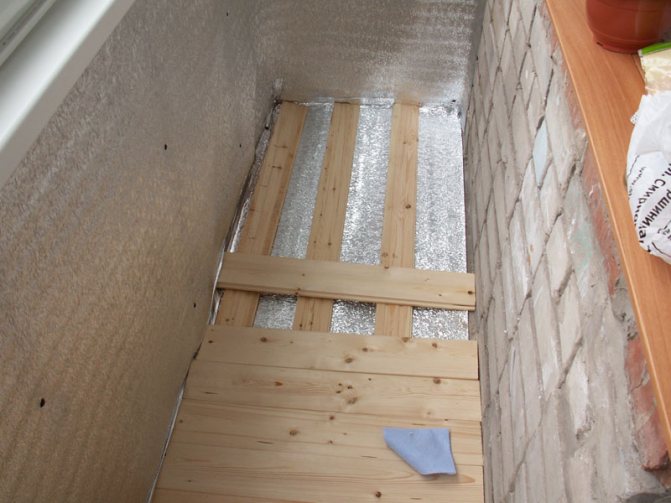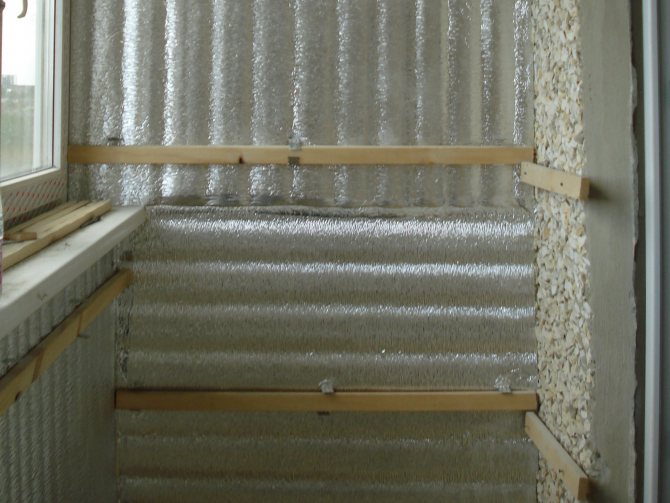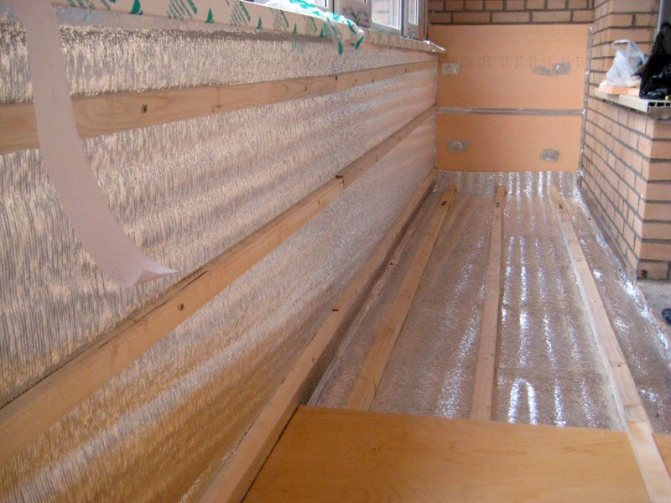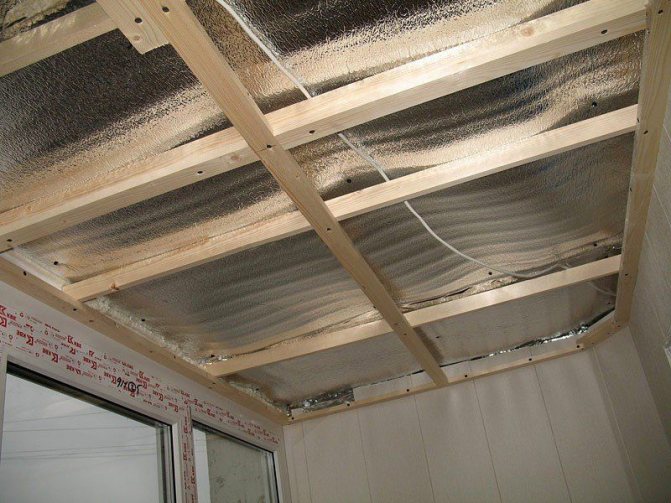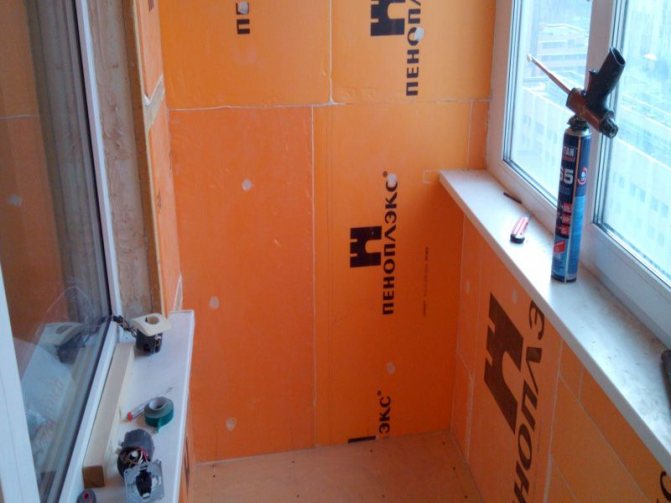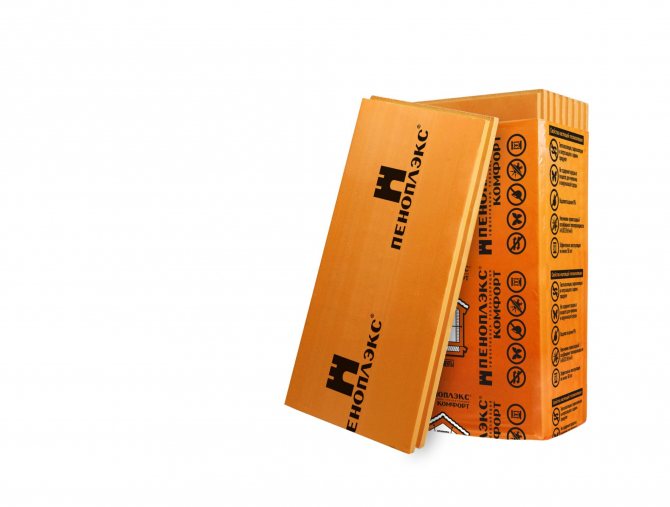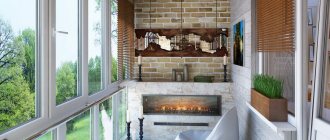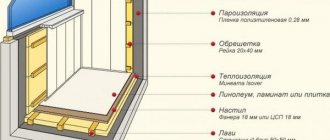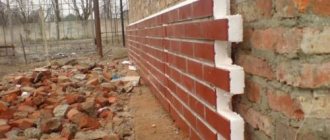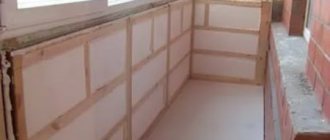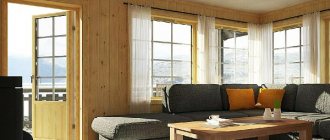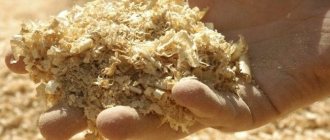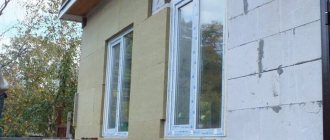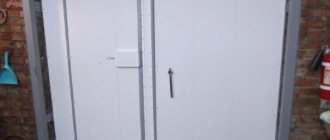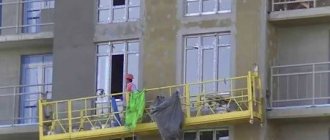Protection from low temperatures will be the insulation of the loggia with penoplex and penofol when isolating these open elements of the apartment from the external environment. A loggia or a balcony without glazing significantly limits the possibilities of their use in the autumn-winter period due to the ingress of rainwater and snow, which can not only spoil the things and furniture located there, but also damage building structures.
The problem is solved by glazing, which has turned out to be such a demanded type of repair work that in many new building projects such a solution is initially laid down.
The main tasks of thermal insulation
The materials used to insulate the balcony from the inside can be very diverse. Mineral wool is also suitable, and solid insulation, such as polystyrene, penoplex, penofol and other analogues. It is worth noting that it is much more convenient to work with a solid insulation that does not split into fibers. Installation is faster, no additional insulation from the insulation itself is required, it is easier to attach to the walls, it does not allow cold air to pass through, so a vapor barrier is not needed, which significantly reduces the cost of work.
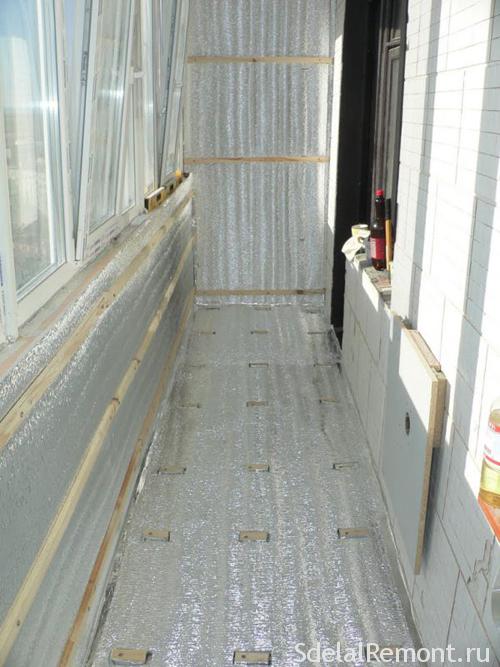
Option for warming the loggia with penofol
Balcony insulation with penofol can be done by hand. This process will not cause difficulties, does not require special skills or tools. Having glazed and insulated the loggia, you can turn it into a useful space that can be used at any time of the year, regardless of weather conditions. Such a hinged structure will allow not only to keep warm in the room, but also to expand the space of the room by several square meters. They can be used as a recreation room, study, library, storage of various items that require certain temperature conditions and lack of moisture.
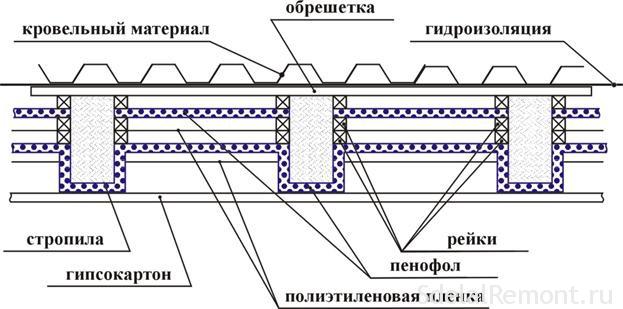

Laying scheme for insulation penofol on the balcony
Insulation of the balcony with penofol or similar materials will allow you to quickly and effortlessly isolate cold air, making the room comfortable. At the same time, the cost of work and purchase of material will be minimal.
Loggia insulation technology
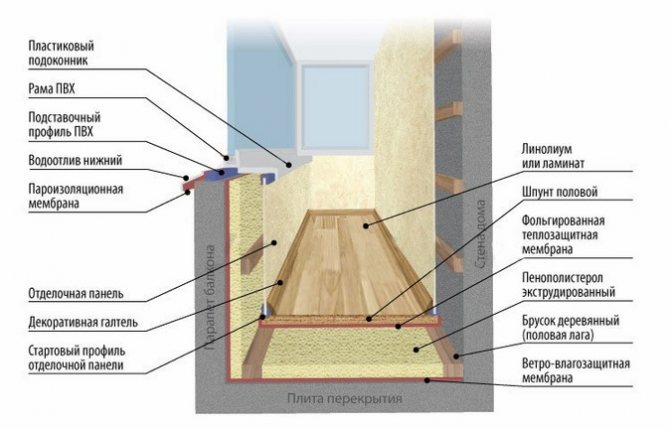

Balcony insulation scheme from the inside.
The insulation of the loggia, as mentioned above, should cover the walls, floor and ceiling.
Insulation of the walls of the loggia with penofol is carried out as follows. First you need to clean the walls of debris, remove nails and screws, level the surface.
It should be as flat as the floor. In the presence of cracks and defects, they must be filled with polyurethane foam.
If necessary, plaster or putty can be used for leveling.
Thermal insulation includes a layer of foam, foam and facing material.
It is recommended to start insulation from the far corner of the loggia. To do this, take a penoplex slab and attach it to the wall. Then fix it with dowels or glue it. In the first case, you will need to drill at least 5 holes for fasteners in the plate and the wall.
It is necessary to fix the foam boards in such a way that the vertical seams do not coincide. The plates on the sides have grooves for a tighter adhesion to each other. It is important not to leave gaps. In most cases, when installing the last plates, you will have to adjust them. For this, a section of the wall is first measured, and then a slab of the same size is cut out. The material is easily cut with a simple knife.
Insulation characteristics
- Penofol is a modern material that has a high ability to isolate cold air from the room.In addition, the material does not absorb moisture at all, it protects well from steam, and therefore no additional vapor barrier is required.
- Penofol is produced usually in rolls, which may differ in thickness. Due to the solid form and standard dimensions, the installation of the insulation is much easier: you do not need to make a crate to fix it, you can attach the sheet to the wall with liquid nails or any other glue, you can also use special plastic dowels.
- Warming the loggia with penofol will not burden the structure. Penofol is made of foamed polyethylene, then covered with a layer of foil, due to which the material acquires the ability to repel heat. The sheets can be folded or cut as needed. They are easy to cut even with a clerical knife.
- The insulation is thin enough, but effective, it does not take up a lot of space, while creating sufficient noise and heat insulation.
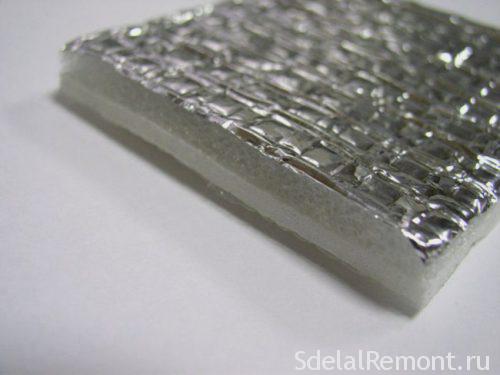

Penofol
Material characteristics
Penoplex is a modern heat-insulating material based on extruded polystyrene. The properties of this material make it an almost ideal insulation for both outdoor and indoor work, which explains the high popularity of Penoplex in the domestic market..
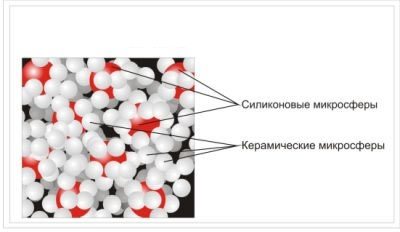

Material structure
The most important characteristics of Penoplex for us include:
- Low flammability.
- High resistance to heat transfer.
- High elasticity under compressive deformations.
- Absence of toxic volatile substances and heavy metals in the material.
In addition, this heat insulator has a rather long (50 years or more) service life, it does not rot even with constant moisture, it is not damaged by rodents and insects.
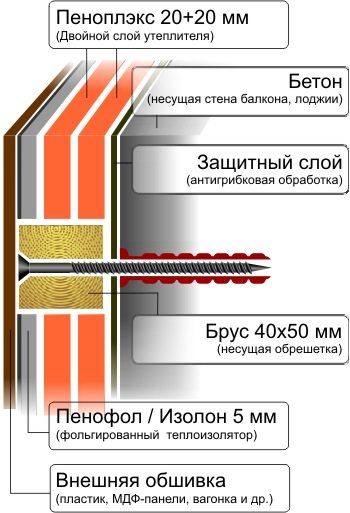

Typical insulation scheme
The advantages of Penoplex as a material for self-insulation of premises, including balconies and loggias, include its low weight, as well as ease of processing. The small mass of the substance does not create a load on the supporting structures, therefore, there is no need to additionally strengthen the insulated balcony.
The price of this material is slightly higher than the more commonly used foam, but high performance makes the choice in favor of Penoplex quite justified.
Penofol varieties
When deciding how to insulate a balcony with penofol, it is necessary to take into account that there are different types of this material. Most often, you can find type A on sale: in this case, the polyethylene base is covered with foil on only one side, which needs to be placed in the direction of the room.
Insulation type B has a double-sided foil coating. Due to this, you do not need to think about which side to fix the material: it repels heat in both directions, this allows you to keep warm air inside the room in winter, and to tear it away from the balcony in summer, creating a pleasant coolness inside.
The insulation of the walls of the balcony from the inside can also be done with material of type C: such material is covered with foil on one side only, and glue is applied to the other side. For installation, you just need to tear off the protective film, press the insulation against the wall, and it will immediately attach without the use of additional materials. This method of installation is especially convenient for places that are difficult to get into, surfaces that have a semicircular or round shape.
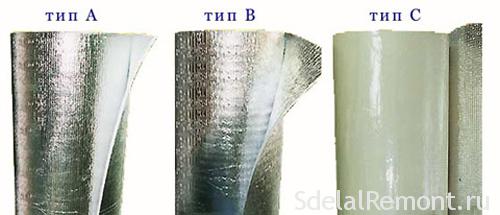

In order for the glue to stick well to the wall, it must be dry and clean.
Less often, insulators of the M and R type can be found on sale. They differ in that one of the sides has a relief shape. The M type has a flat foil, the R type has a raised part. Insulation of such a structure is used in multilayer structures, for example, for roof insulation.The foil can be additionally covered with plastic wrap: this is done for better preservation. Such insulation is well suited for installing a warm floor.
Mounting features
The first layer of double thermal insulation using these materials is penoplex, penofol is laid on it. Further finishing is allowed:
- MDF;
- Laminate;
- Chipboard and other suitable materials.
Penoplex plates are attached to the surface due to fungi, and the simplest option can be used to fix the foam foil layer. Namely, to purchase a heat insulator that has an adhesive base on one of its sides. In the case of choosing a foil coating of heat-insulating material, the connection can be made using self-tapping screws, a construction stapler.
As an adhesive solution, it is permissible to use a mixture of glue with the addition of polyurethane or cement. In this case:
- the fastening is more durable;
- the structure increases the level of strength and resistance to mechanical damage;
- significantly extends the period of active operation.
When using such solutions, the heat-insulating qualities also increase, since the mixture fills possible gaps, creating a kind of waterproofing between the plates of the heat-insulating material.
Another way of bonding penofol and polystyrene foam without an intermediate layer of other materials is the use of bitumen-based glue. This is an affordable option that provides a reliable connection of elements.
Using penoplex instead of penofol
Insulation of the balcony from the inside with foam is also a common option. This material is available in the form of lightweight, compact boards that are easy to mount with glue. Also for installation, you can use plastic dowels with a special plate.
When laying out the next row, shift it. Avoid overlapping vertical seams, otherwise the structure will blow through.
Penoplex slabs are easy to cut, so you can adjust the size of the slab to the area of your structure, cut out a part of any shape using a clerical knife or a metal file. The technology of insulating the balcony from the inside with the help of penoplex provides for filling all joints with polyurethane foam. Thanks to this, it will be possible to make the room airtight, getting rid of all the cracks.
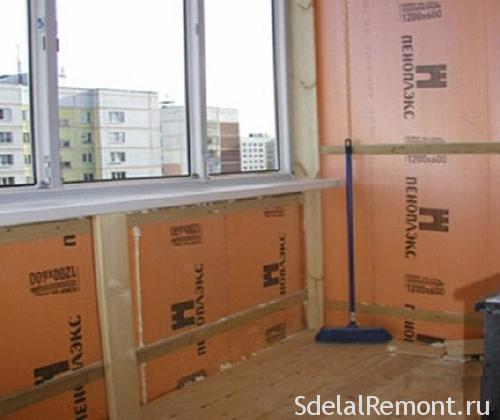

Loggia insulated with foam
Balcony insulation with penoplex can be combined with penofol. This approach will allow you to get additional insulation, reflect warm air, and raise the temperature in the room by several degrees. After you have fixed the penoplex, glue the penofol on top of it. As a result, you will get a reliable sealing of the balcony, the thickness of which will be minimal.
List of tools and materials
Balcony insulation scheme from the inside without installing a vapor barrier.
To organize the insulation of the floor, ceiling and walls of the loggia, you need to purchase the necessary tools and raw materials. To insulate the floor, walls and ceiling, you will need: a building level, penoplex plates, foam rolls, dowels, nails, a hammer, a screwdriver, a drill, adhesive tape, polyurethane foam, primer (putty), glue. In addition, cladding material (panels) will be required. When insulating the floor with penoplex, for the preparation of concrete, sand, crushed stone, water and cement are needed. To insulate the floor, walls and ceiling of the loggia, you will also need wooden slats with a section of 20 x 40 mm.
Comprehensive insulation of the floor, walls and ceiling of the loggia with penofol and penoplex is the best option.
How to install insulation?
The technology of insulating a balcony with penoplex and penofol is not very complicated, and you can master it yourself. First of all, it is important to prepare the wall.It is necessary to cover all large gaps with a cement mixture or fill them with polyurethane foam. The wall itself must be cleaned of debris, grease, dirt in order for the glue to set well. After that, you can glue the insulation. Make sure that the foil looks into the room; penofol, like penoplex, is mounted joint to joint. Foil tape can be used to close the seams.
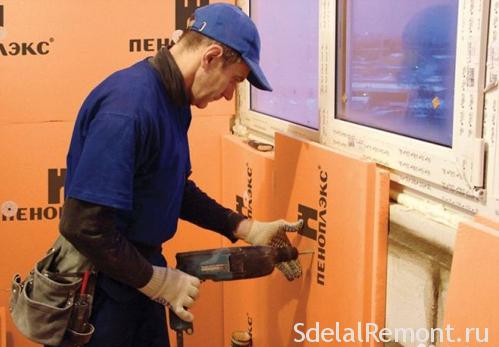

If a fine finish is planned, lathing may be required for it. For this, wooden slats are usually used, the size of which is 20 by 40 mm. There should be free space between the decorative coating and the insulation, the resulting air gap will create a layer of additional insulation.
The slats are placed at a distance of no more than 45 cm from each other. This should be done parallel to the ceiling or floor. Check the evenness of the laths with a building level. You need to start mounting from the bottom up.
Do not forget that you will have a plinth, so the first rail should not be placed close to the floor, but with some indentation, which will then cover the plinth.
After the crate is ready, you can attach any materials you like for wall decoration to it. Plasterboard or lining is often used.
Insulation of the floor and ceiling using penofol
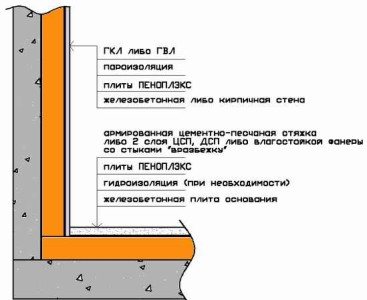

The scheme of insulation of the loggia with penoplex.
Floor insulation is an important component of the renovation. The technology is similar to the previous one. At the beginning, you need to level the floor surface, remove old skirting boards, and so on. Then a crate is made of beams. Their height depends on how many layers of insulation are required. The frame is attached, retreating 10 cm from the edge of the wall. The step between the beams is 50-60 cm. The crate is fastened with a perforator, hammer. First, a hole is drilled, a dowel is inserted and a self-tapping screw is nailed. At the next stage, the insulation is laid. It is important that the rolls fit snugly together. It is recommended to cut penofol sheets slightly larger than the distance between the bars. This will ensure a snug fit.
After that, the plywood sheets are laid. When fastening them around the entire perimeter, it is imperative to leave a small gap of 1 cm. The sheets are fastened with self-tapping screws every 45 cm. Penoplex thermal insulation assumes a concrete screed with a layer of about 4 cm. Ceiling insulation is similar to floor insulation. But there are also differences. Here, after laying the first layer of insulation, it must be fixed with a wooden lath using self-tapping screws. The slats are taken with a length equal to the width of the loggia. The joints are filled with polyurethane foam. The second layer of penofol will be fastened with horizontal strips.
What is penofol, its pros and cons
Penofol - insulation based on foamed polyethylene, covered with aluminum foil on one or both sides. It is used both for independent insulation and in addition to other insulation.
Each material in the composition of penofol has its own roles. Polyethylene does not let the cold into the room from the street, and the foil reflects the heat back into the room. Moreover, it protects polyethylene from vapors in the apartment.
In terms of its qualities, penofol in many ways beats other heaters.
Penofol benefits


Foil penofol is a good waterproofing agent
- It is cheaper than foam and mineral wool
- Penofol reflects up to 97% of heat into the room! This is if it is covered with foil on one side. And if from two, it also reflects heat to the street in summer. So with him, even on the hottest day, it will be cool on the balcony.
- Penofol has a fairly low water absorption - only 0.6 - 3.5% per day
- Foamed foam on both sides is a good waterproofing agent, and does not absorb moisture from the street
- Penofol belongs to non-flammable substances (group - G1). Styrofoam, for example, burns perfectly
- Penofol operating temperature from -60 to +100 degrees
- Well protects the balcony from noise
- Penofol is easily mounted, even self-adhesive is sold
- Penofol is one of the thinnest insulation materials. It comes in 3, 4, 5, 8 and 100 mm thick. This means that it saves the inner space of the balcony
Penofol there is only one drawback - it must not be laid under the screed. After all, firstly, when interacting with cement, the foil is destroyed. And secondly, penofol is compressed under the screed. Even if you take the thickest, one-centimeter, insulation and just squeeze it with your fingers, it will sit down to a size of three millimeters. And the less the thickness, the worse the insulation works.
Want to know about other insulation materials? Read about the properties of penoplex and how it happens. In the article "Foam insulation of balconies" you will find the main characteristics of this insulation. As well as advice on what to look for when buying.
For insulation of balconies with mineral wool, look for information at the link:

